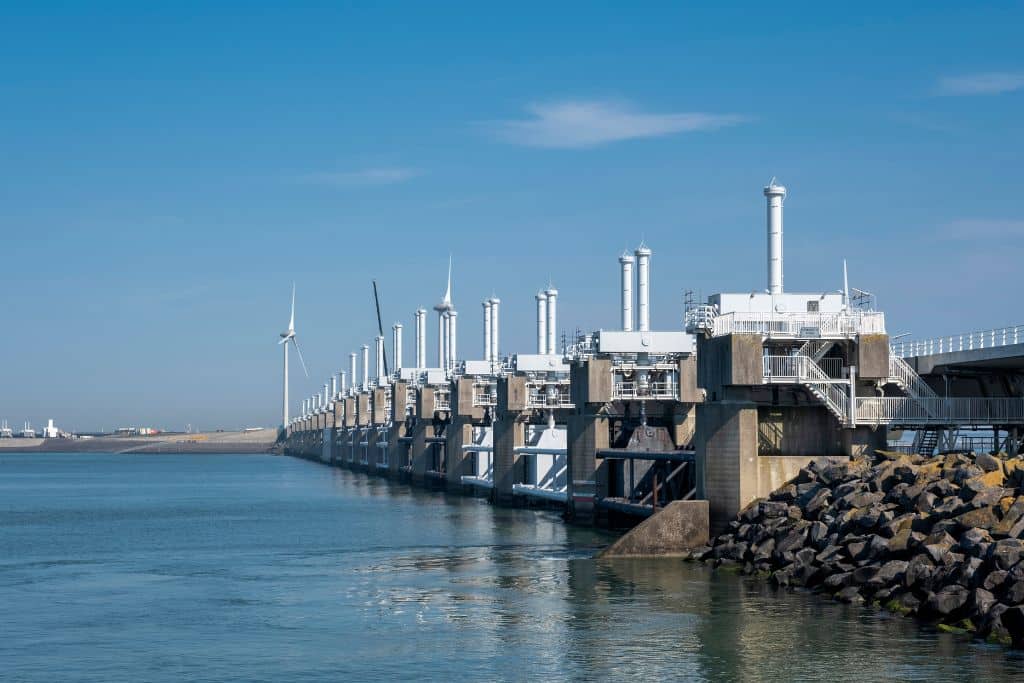In an exclusive interview with Earth.Org, Water Business Leaders Shanshan Wang and Wayne Middleton from sustainability development consultancy Arup share their views on sustainable water management systems.
—
The 2023 Singapore International Water Week, which took place between June 4-6, showcased an open platform discussion on “Urgent Climate Action for a Sustainable Water Future”, focusing on how the industry can provide access to knowledge, technology, innovation, and capital to support the transformation of water utilities and help cities become climate-resilient, smart, and sustainable.
This opportunity for global cross-sectoral collaboration and discourse was spearheaded by private stakeholders such as Arup, a sustainability development consultancy. In an exclusive interview with Earth.Org, Wayne Middleton and Shanshan Wang, Arup’s Water Business Leaders, spoke about the implications of this conference, their insight on efficient water management systems, new infrastructure, and the way forward.
You might also like: Understanding the Importance of Water Conservation
Water and Energy Integration for Sustainable Progress
With more than one-third of the global population affected by water scarcity, it becomes imperative to optimise its disbursement to citizens. One of the main caveats to efficient water management systems is their integration with energy management systems. Water and energy work in a symbiotic manner, wherein the sustenance of both resources is essential to the production of the other. To put it simply, water is integral to producing energy; consequently, energy is required to treat water and its movement in the form of potable, consumable water.
The problem, however, arises due to a lack of interdependence between the two sectors. A lack of cross-sectoral collaboration is to the detriment of not just one but two major natural resource industries. To quantify this impact, the energy sector comprises approximately 10% of total water withdrawals and 3% of aggregate water consumption worldwide.
Speaking about the interdependence of the two industries, Wang said that water as an “undervalued asset” is at the root of the lack of incentive governments and other stakeholders feel in relation to collaborative efforts. Resulting from this is a deterioration in water quality.
“Decreased water quality has community and environmental impacts, and treating such water could be carbon-intensive,” Wang explained.
To facilitate finding a solution to such an imminent obstacle in the optimal usage of water as well as energy, Middleton went beyond cross-sectoral collaboration and suggested the route of a balancing act amongst stakeholders. During the interview, he clarified the importance of varied stakeholders working in unison; however, this needs to be in line with a restricted extent to which private firms can have a say on potable water distribution.
“An example that comes to mind is where I am from – Australia. Due to water shortages and droughts becoming more frequent”, Middleton explained, “hydrogen production is emerging as leading solution for storing green energy as part of our overall energy transition journey.” However, he added, without careful and collaborative planning between the water and energy sectors, there is a risk that privately owned energy companies could compromise future water security and resilience in times of drought
Going Beyond the Cost-Benefit Analysis
In Arup’s recent publication, ”A New Future for Water”, there is an emphasis on identifying essential areas in water management that require urgent attention. More specifically, Wang stated that a part of this paper focuses on explaining how “market mechanisms have failed the environment”. Additionally, it delves into how a simplistic cost-benefit analysis would “never work” in the accurate assessment of water as natural capital.
Middleton and Wang stated that a common solution by governments would be the promotion of collaboration and the exchange of experiences for best practices. An excellent example is represented by the Singaporean government’s organisation of the Singapore International Water Week which brings both developed and developing countries to discuss the common challenges.
In addition to bringing together governments with “different starting points,” another solution to pivot from a purely economic and profit-based method is to offset prices, according to Middleton. In line with the case study of Australia, he shed light on the “bottom-top approach,” as opposed to all policies being implemented as a trickle-down effect from the government.
Contrary to the more common approach to subsidising water heavily, Wang spoke about the approach adopted by Singapore to not only recover the full costs of its supply and production but also to incorporate the higher cost of producing water from the more expensive “taps” – namely from desalination and NEWater production.
A slight increase in prices, as Wang mentioned, will support the market economy while also incentivising households to save water, leading to a larger involvement of civilians as stakeholder groups.
The Way Ahead
For the successful strengthening of water and energy management systems, a key aspect to consider is the importance of nature-based solutions.
As Middleton said when asked about the future of water, there is an increasing need for “regenerative and not reactive” solutions. Advancements in infrastructural planning for the preservation of water and conservation of natural systems in cities are imperative from the perspective of building more resilience and preserving natural biodiversity.
According to Wang, there is a larger focus now on the prospects of water as a promising field.
“At the conference, I found several delegates who moved from the oil and fossil fuel industry to the water industry,” she added. “This is surprising and indicates the water industry being seen as a more important and lucrative natural capital.”
Middleton’s focus on constant improvement, innovation, and “every project as an opportunity to do something better than before” highlights a hopeful future for water, and its importance as a vital asset that the markets will collaboratively work on sustaining.
You might also like: Exploring the Most Efficient Solutions to Water Scarcity














